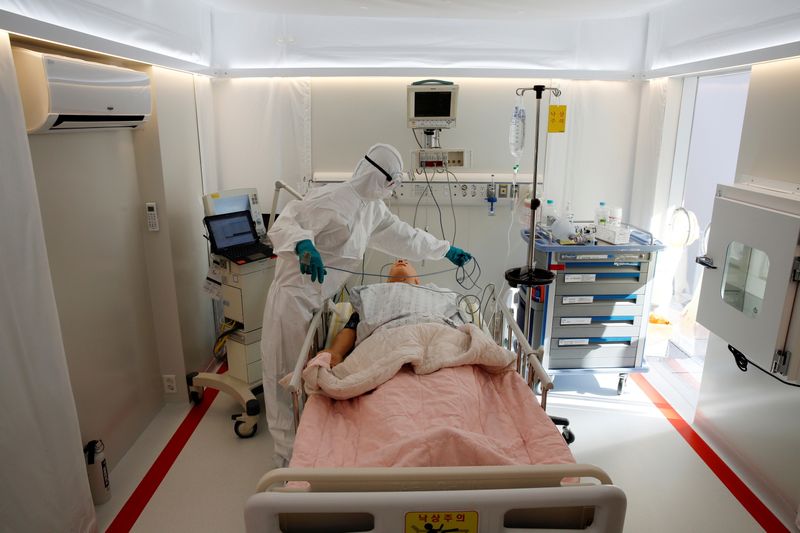SEOUL (Reuters) – South Korean researchers say they have designed an inflatable “negative pressure” ward for isolating and treating patients with infectious diseases like COVID-19, after the pandemic exposed shortages of such beds around the world.
The rooms use a ventilation system that creates negative pressure to allow air to flow into the isolation room and be channelled out safely, helping prevent the spread of airborne pathogens.
They have become a vital tool for fighting the coronavirus pandemic, but many countries have struggled to create them quickly enough.
The mobile clinic modules designed by a research team at the Korea Advanced Institute of Science and Technology (KAIST) are large greenhouse-like inflatable tents, which the institute said cost a fifth of the price of building a conventional hospital ward.
Nam Tek-jin, an industrial design professor who led the KAIST team, says their tents, which are the size of a basketball court, can be installed and equipped in less than a day.
“At the start of the COVID-19 pandemic, facilities for mild patients were not big a problem, but we noticed that space for seriously ill patients was urgently in need as their condition would suddenly deteriorate,” Nam told Reuters.
“We thought of developing a facility for not just isolation, but also treatment.”
The frames, panels, and lighting can be assembled on the spot to form a negative pressure room with a separate entry space and a shower pod in just 15 minutes, and it takes less than 24 hours to set up the entire air tent with four such rooms, he said.
The rooms are also equipped with panels that allow medical workers to provide aid or pass things like food without having to enter the room and avoiding burn out from wearing cumbersome gear, said Cho Min-su, a director at the Korea Institute of Radiological and Medical Sciences.
Nam said the units are ready for mass production, but no customers have been announced yet.



























